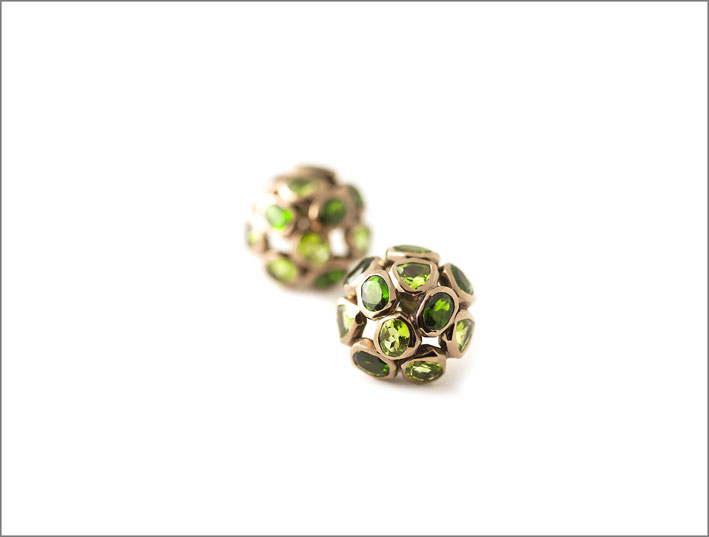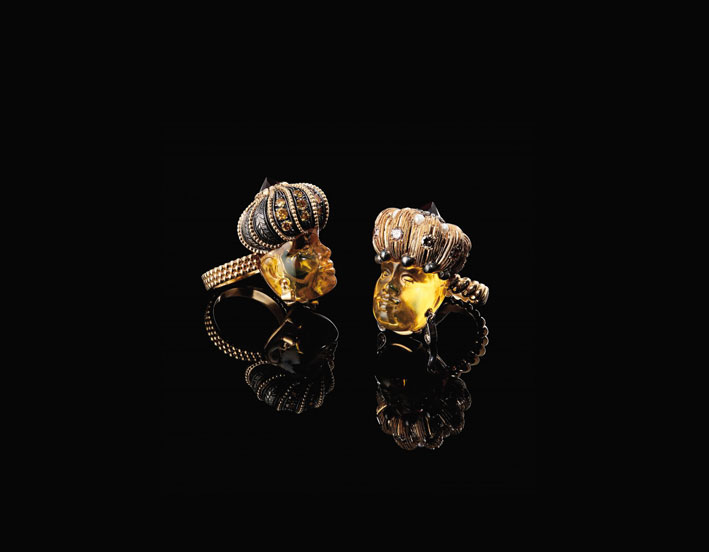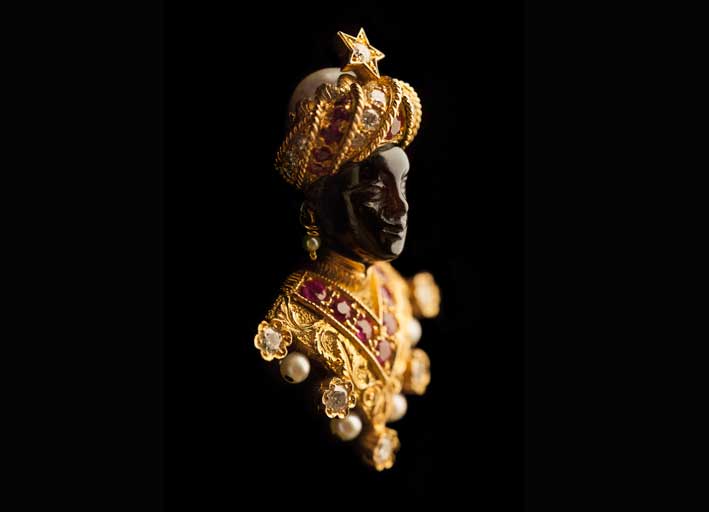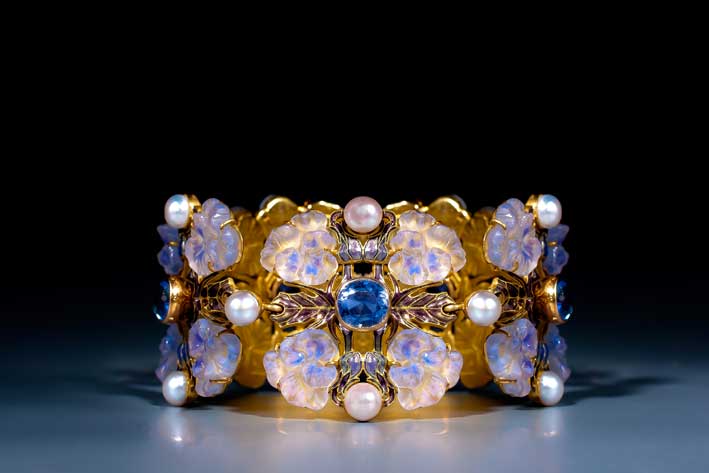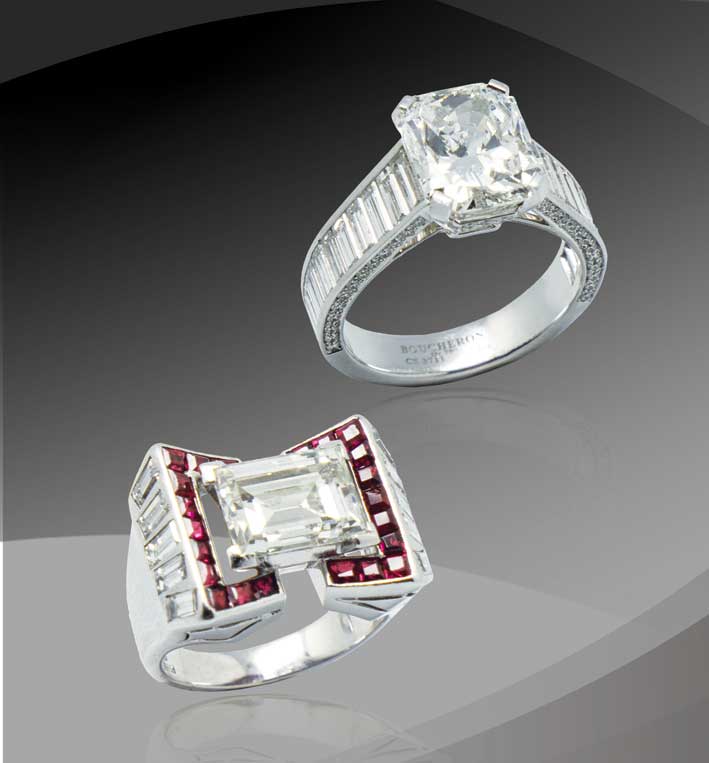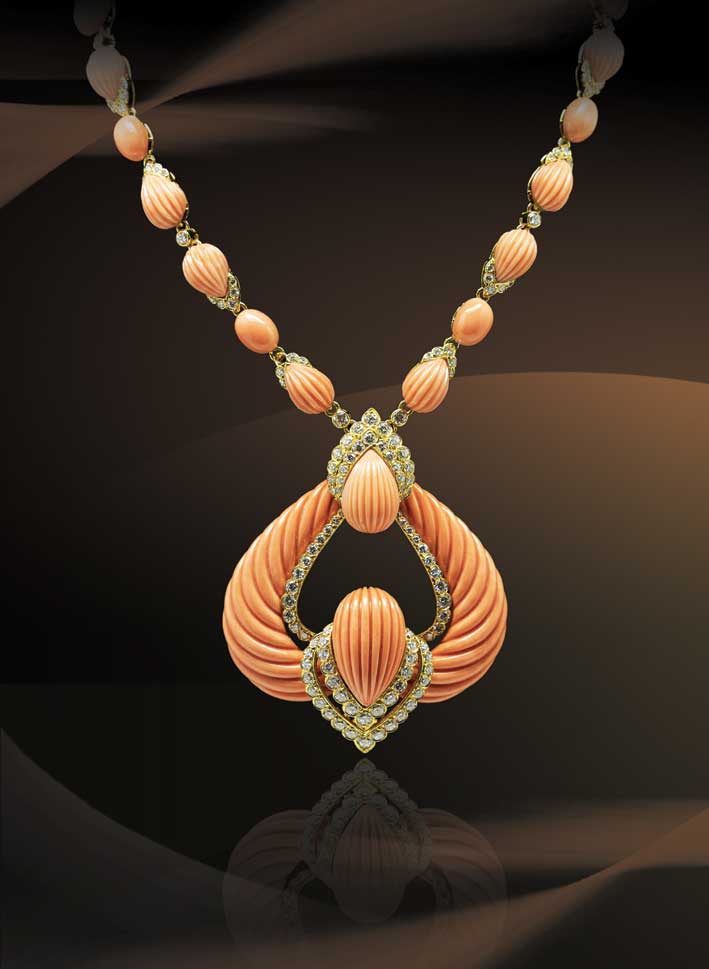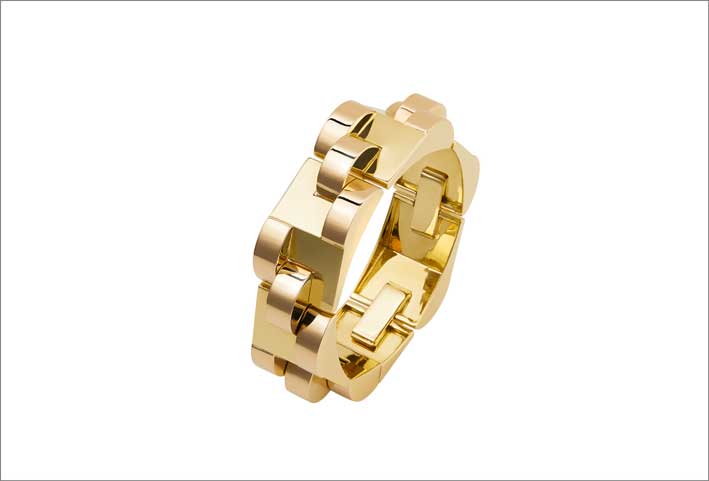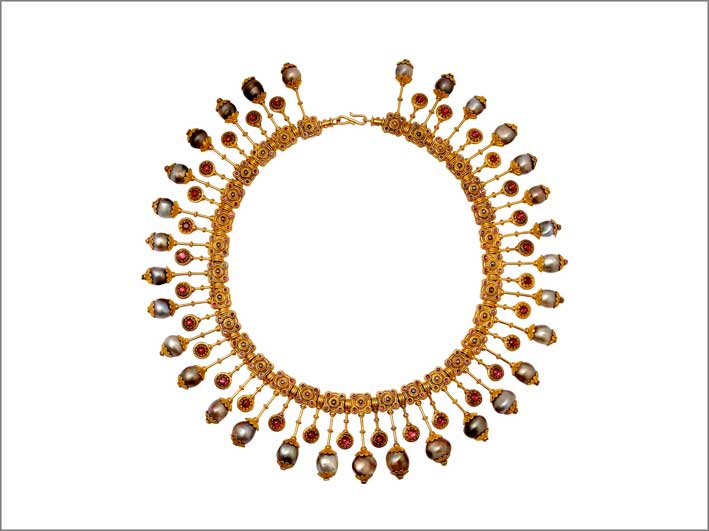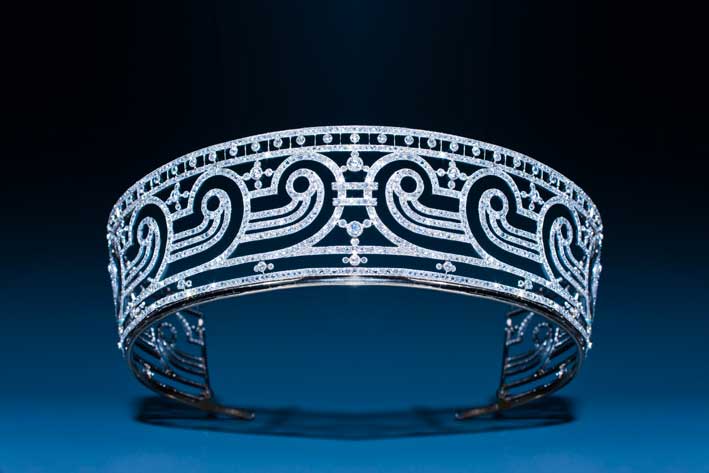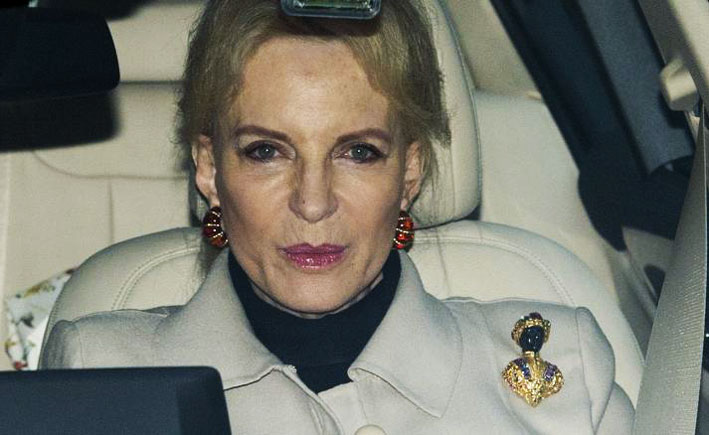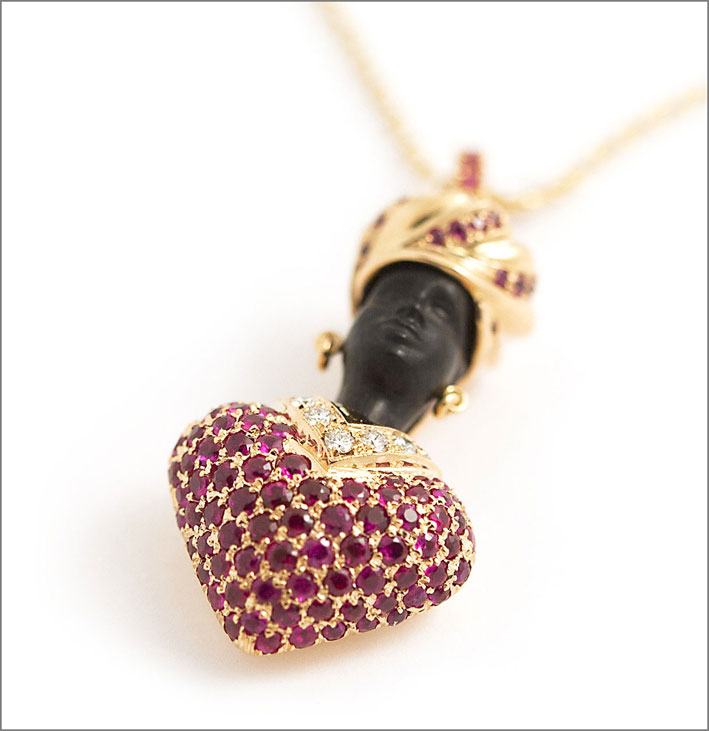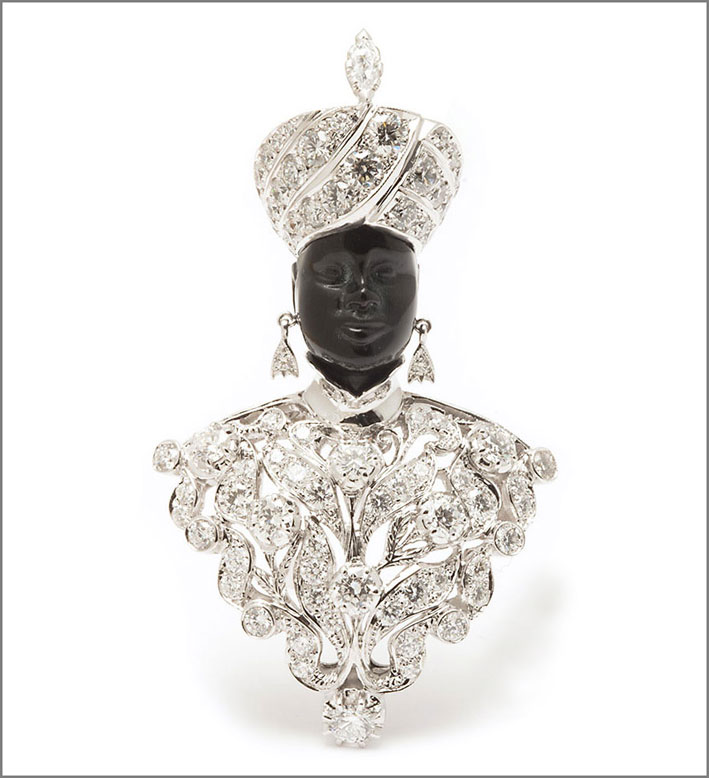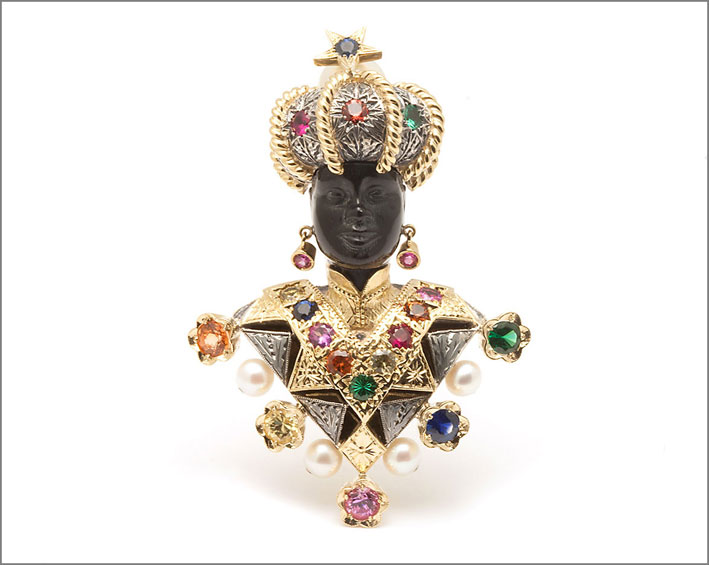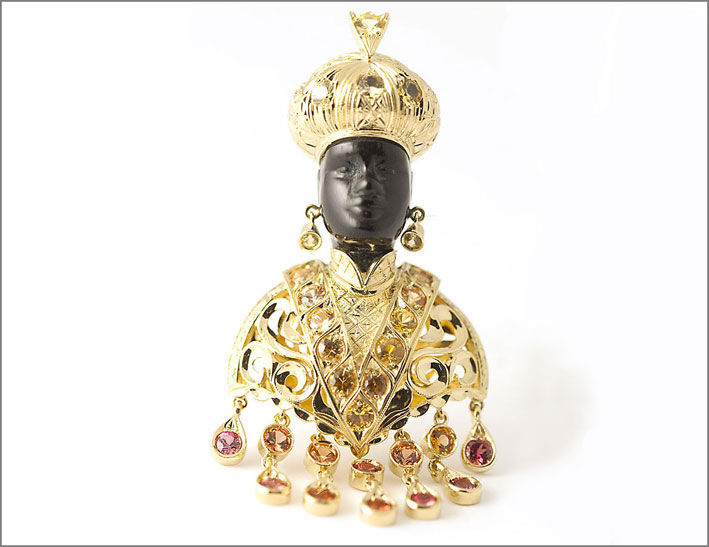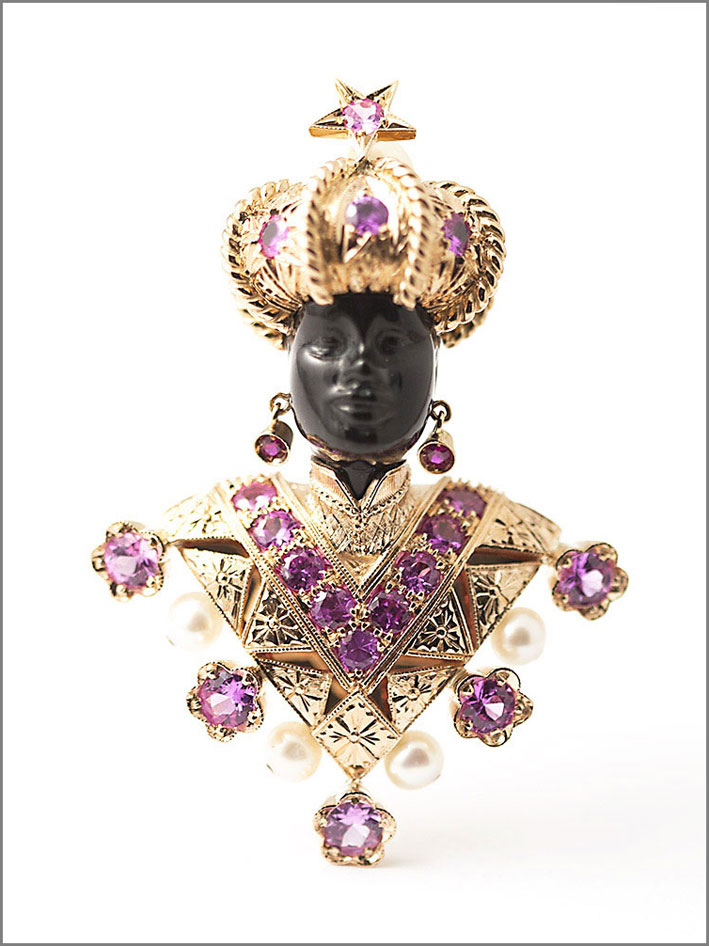The great jewels of Venice will be found in Brussels. From Sunday 29 January to Sunday 5 February 2023, the Brafa will return to the Belgian capital, one of the great world art, antiques and jewelery fairs, with six Maisons present in this edition. And among the pavilions of Brafa there will also be the Gioielleria Nardi, a historic Maison in Venice, known for its high quality production. Nardi announced that it will be present in Brussels with two collections of rings: masks in gold, enamel, colored stones and diamonds and Venetians in gold and silver, colored diamonds and faces engraved in amber.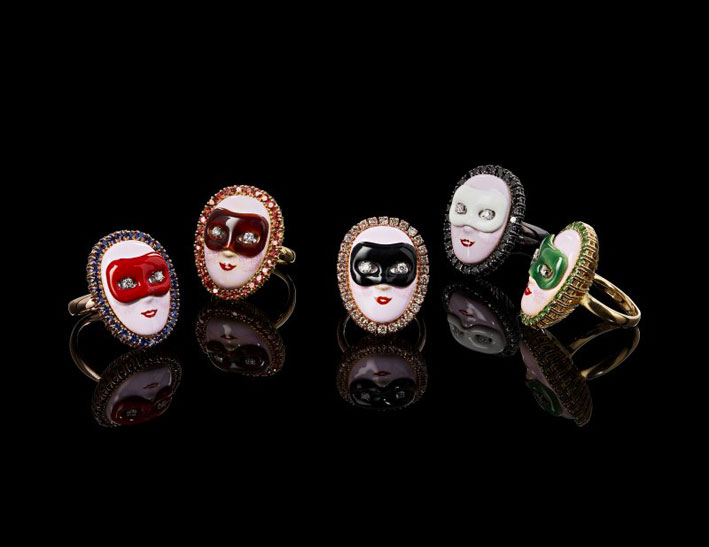
Another symbol of Venice, the lion, has been transformed into an 18-karat gold and burnished silver brooch, set with white and brown diamonds. Nardi has been located in the historic headquarters in Piazza San Marco in Venice since 1925. The jeweler creatively reinterprets the culture and charm of the city on the lagoon through the processing of metals and precious stones. Among his most famous clients are Elizabeth Taylor, Grace Kelly, Ernest Hemingway, Marilyn Monroe, the royals of Spain.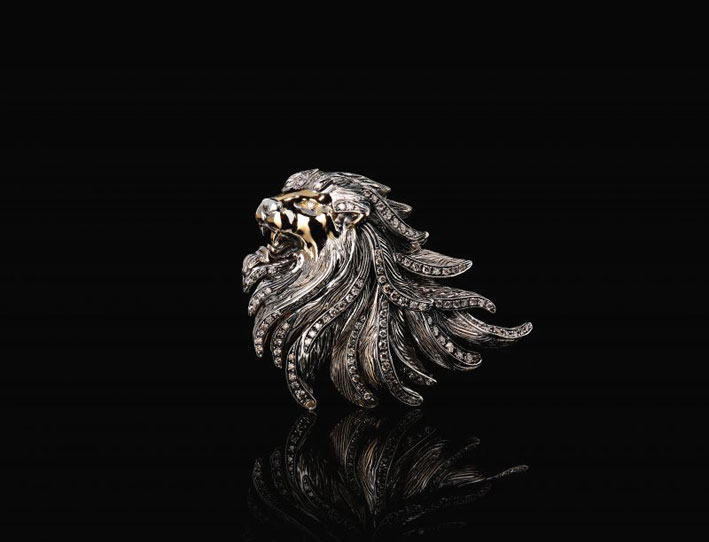
Among the six jewelers participating in the new edition of Brafa are Barbara Bassi (Italy, Cremona), Gioielleria Nardi (Italy, Venice), Bernard Bouisset (France, Béziers), Collectors Gallery (Beglio, Bruxelles), Epoque Fine Jewels (Belgium , Kortrijk), VKD Jewels (Netherlands, Uden). The presence of 130 international galleries from 15 countries is expected at the Brafa, with thousands of works of every style and time including paintings, sculptures, antique furniture, ceramics and jewels but also wunderkammers, African art and carpets.